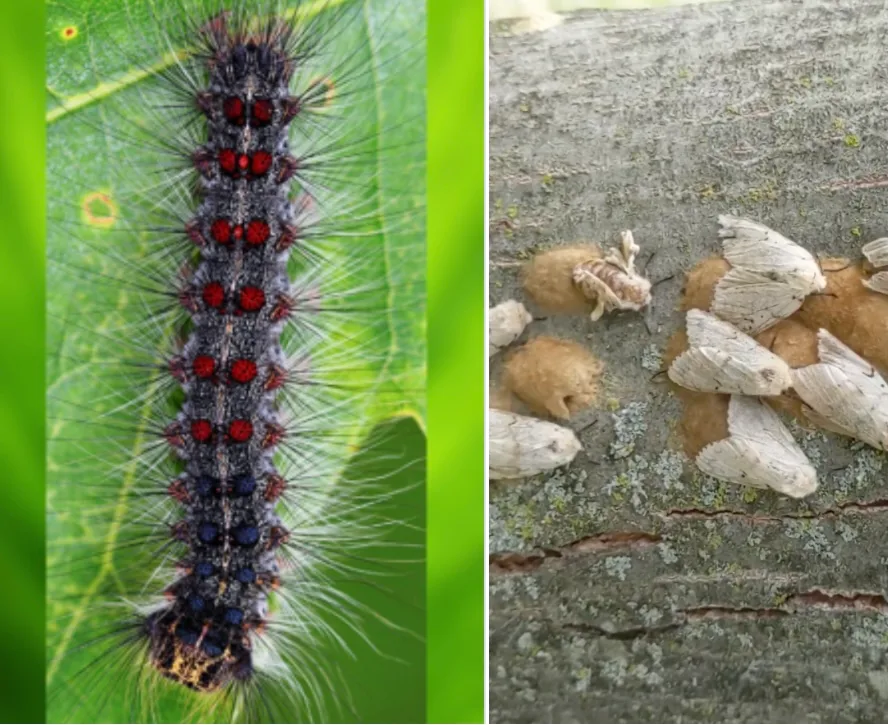
Experts say to prepare for another LDD moth infestation this spring
This isn't the first time LDD moths have infested parts of southern Ontario.
Experts are warning of another severe Lymantria dispar dispar (LDD) moth infestation in southern Ontario this spring, similar to what the region experienced last year.
In some areas, the LDD moth infestation, which began in 2019, was the worst on record. In 2020, moth caterpillars ate the leaves off of trees covering more than 580,000 hectares of land.
The larvae eat tree leaves, sometimes leaving them incapable of producing new ones. Most trees recover, but some struggle - especially if there are other environmental stressors present, like drought.
LDD moths are usually found on oak trees but can sometimes be found on other hardwoods.
The caterpillars, which can grow up to six centimetres long and identified by five pairs of blue dots and six pairs of red dots on their backs, are voracious eaters. When they band together on trees, they may cause feces to rain down from the canopy.
"A caterpillar can eat about one square metre of leaves as it goes from a little tiny new caterpillar to a great big adult one that's ready to pupate. That's a fair amount of foliage for just one caterpillar," Chris MacQuarrie, a research scientist with the Great Lakes Forestry Centre in Sault Ste. Marie, Ont., told the CBC last year.
Some jurisdictions are planning ahead, like the City of Barrie, which has allocated extra funds to manage the potential infestation.

Caterpillars can be identified by the red and blue dots on their backs. (City of Toronto)
INVASIVE SPECIES
LDD moths are native to parts of Europe and Asia, making their way into the U.S. by Boston amateur entomologist Étienne Trouvelot in the 1860s, who thought they may have potential producing silk, the CBC reports.
They escaped, reaching Canada by 1969.
Experts say the moth outbreaks are cyclical, with severe infestations popping up once every decade and lasting for around three years. Favourable weather conditions also help an uptick in the moths. Southern Ontario has seen previous LDD moth outbreaks in 1985, 1991, and 2002.
WATCH OUT FOR THESE THREE PROBLEM BUGS THIS SPRING:
PREVENTION
The beige LDD moth egg sacs are easy to spot on trees and can be scraped off into soapy water.
Once they hatch, caterpillars can also be rounded up into soapy water, along with the adult moths who emerge from their cocoons in summer.
Experts also recommend wrapping bands of burlap around trees to trap them.
